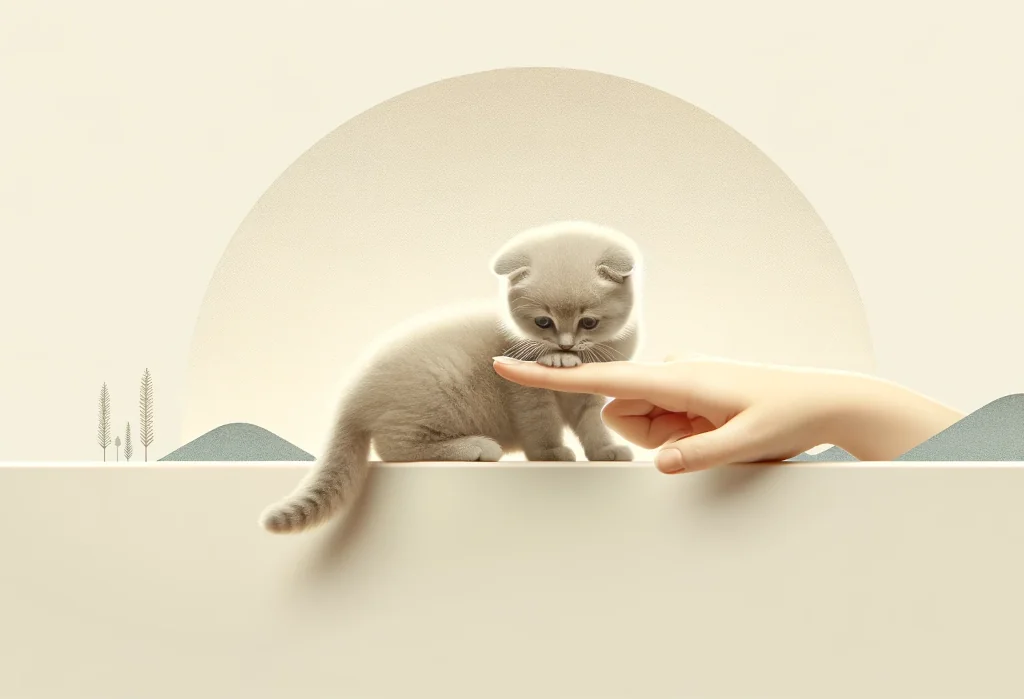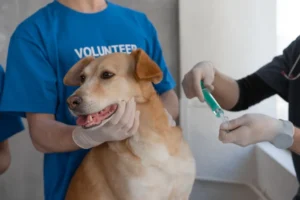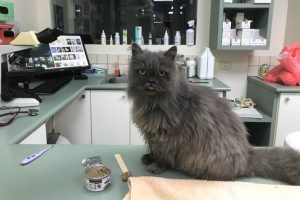Sometimes, it feels like our furry friends mistake our fingers for chew toys. If your cat’s love nibbles are turning into a bitey affair, you’re not alone in your nibbled fingertips saga. This blog post is your personal guide to understanding why your cat sees your fingers as irresistible chewables and how to navigate this quirky behavior. Expect to unravel the mysteries behind those cute but confusing nibbles!
Quick Takeaways:
- Cats might bite fingers out of affection or to signal needs like hunger; observe the context of the bite.
- Adult cats might still chew as a way to relieve discomfort or maintain dental health, not just kittens.
- Redirect biting behavior with alternatives like puzzle feeders and toys that harness their natural hunting instincts.
Is It Love or Hunger Driving Those Bites?
Ever wondered why your kitty turns your fingers into their personal chew toys? It might keep you up at night, pondering if it’s a sign of affection or just a signal that their food bowl is empty. Let’s break it down.
Cats often use gentle biting as a form of affection, known affectionately as “love bites.” It’s their way of telling you that you’re part of the family, a quirky but heartwarming gesture of love. On the flip side, some nibbles might be your feline friend’s way of saying, “Hey, remember me? The one with the empty bowl?” It’s not uncommon for cats to nip when they’re feeling peckish or when they want your unwavering attention – generally directed towards filling up their food dish.
A unique tip for cat owners: Pay attention to the timing and the context of these bites. If your cat is nibbling on you right before their usual feeding times, it might be their way of saying they’re ready to chow down. However, if these bites occur during a petting session or while you’re relaxing together, chances are it’s purely out of love.
Teething Troubles: Not Just a Kitten’s Game
It’s a common belief that only kittens go through the teething phase, right? Well, not exactly. While teething is most intense during kittenhood, some cats continue this chewing habit into adulthood. Here’s why: Chewing can help relieve the discomfort that comes with teething, much like a teething baby.
But here’s something most articles don’t tell you – for older cats that still exhibit this behavior, it might not just be about comfort. It can also be a way for them to keep their jaws strong and their teeth clean. They’re natural hunters, after all, and this instinct doesn’t just disappear, even if the “prey” ends up being your fingers.
To help your adult cat (who might still think they’re a teething kitten), consider providing cat-safe chew toys or dental treats specially designed for this purpose. A practical example? The Petstages Catnip Chew Mice. These toys not only satisfy their instinct to chew but also help keep their teeth clean and their breath somewhat fresher.
Communication via Chomps
Think of your cat’s bite as their form of Morse code – a way to send you a message, loud and clear. Now, decoding this message might seem tricky, but once you understand the why, it becomes easier to address the how.
Cats nip for a variety of reasons: seeking attention, expressing comfort, or even showing signs of overstimulation. Yes, too much petting can indeed lead to a gentle, or not-so-gentle, chomp. It’s their way of saying, “That’s enough for now, thanks!”
A bite might also be a cat’s way of asserting their boundaries or communicating discomfort or fear. The key to understanding these bites lies in observing the context and your cat’s body language. Are their ears flattened? Is their tail twitching in annoyance? These signs, coupled with a bite, can provide insight into your cat’s comfort levels and needs.
In conclusion, while we might not speak the same language as our feline companions, their actions, including those curious nibbles, offer us a glimpse into their emotions and needs. Remember, each cat has its personality, so what works for one may not work for another. Learning to understand these unique forms of communication can significantly enhance the bond between you and your furry friend.
How to Redirect the Biting Behavior
Redirecting your furry friend’s penchant for nibbling on your fingers requires a blend of ingenuity and positive reinforcement. The key is to introduce more exciting alternatives, steering their attention away from your digits. Here’s how to make the swap:
-
Introduce a Variety of Toys: Offer toys that cater to your cat’s hunting instincts. Toys that mimic the size and movement of prey, such as feather wands or small, motorized mice, are incredibly enticing. Rotating the toys regularly can keep your cat’s interest piqued.
-
Utilize Edible Chews: Edible dental chews designed for cats not only provide a safe outlet for chewing but also contribute to dental health. Select products vetted by veterinary institutions for safety and efficacy.
-
Engage in Interactive Play: Dedicate time each day for interactive play sessions using toys that encourage hunting behaviors. This not only redirects their biting but also strengthens the bond between you and your cat.
-
Reward non-biting behavior: When your cat chooses to play with toys instead of nibbling on your fingers, reinforce this choice with treats or affection. Positive reinforcement solidifies desirable behaviors.
-
Be Consistent: Ensure all family members follow the same guidelines. Consistency is key in modifying your cat’s behavior.
Unique Tip: Create a DIY toy that appeals to your cat’s sense of smell by incorporating catnip or silver vine into a homemade fabric toy. This can be an old sock filled with catnip, tightly knotted at the end. Not only does this offer a safe chewing alternative, but it also stimulates your cat’s senses in a new and exciting way.
Patience and consistency are your best tools here. Remember, it’s not about punishing the unwanted behavior but rather about guiding your cat towards more appropriate alternatives.
Understanding the Hunter Instinct
Cats are natural hunters, a trait deeply ingrained in their DNA. This instinctual drive propels them to stalk, pounce, and bite – actions critical to their survival in the wild. In a domestic setting, your moving fingers can inadvertently trigger this predatory response, transforming them into an impromptu ‘prey’.
When your cat watches your fingers flit across a keyboard or wave around while you’re talking, their hunter instinct kicks in. The motion entices them, igniting a primal urge to chase and capture. This isn’t just play; in your cat’s mind, they’re on the prowl, engaging in a ritual as old as their species itself.
Here’s how you can use this understanding to your advantage:
-
Reduce Direct Hand Play: Avoid using your hands as toys. While it may seem harmless, it reinforces the idea that your fingers are acceptable targets. Instead, always have a toy at hand (pun intended) to substitute when play escalates.
-
Introduce Puzzle Feeders: These mimic the challenge of hunting, satisfying your cat’s natural instincts in a non-destructive way. Puzzle feeders encourage cats to solve a puzzle to receive their food, mirroring the effort required to catch prey.
-
Provide High Places: Cats are not just hunters; they’re also keen on observing their territory from high vantage points. Cat trees or wall shelves can satisfy this need, reducing the likelihood they’ll view your hands as moving targets.
Understanding the hunter instinct in cats offers a window into their world. It allows us as pet owners to empathize with their natural behaviors and meet their needs in a safe, non-destructive manner. It’s not about stifling their instincts but providing appropriate outlets. Embrace your cat’s inner predator, just not at the expense of your hands.
By employing these strategies, you can redirect your cat’s chewing behavior and satisfy their instinctual needs, creating a harmonious living situation. Remember, every cat is unique, and finding the right solution may require a bit of trial and error. Stay patient, keep engaging with your cat, and most importantly, enjoy the journey of discovery together.
Alex, a passionate animal lover, has experience in training and understanding animal behavior. As a proud pet parent to two dogs and three cats, he founded AnimalReport.net to share insights from animal experts and expand his knowledge of the animal kingdom.










